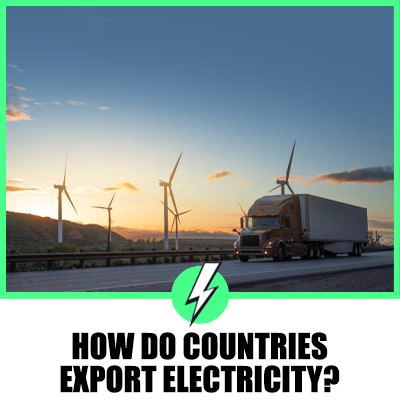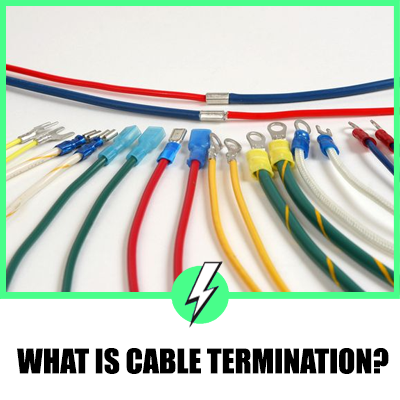How Do Countries Export Electricity? A Deep Dive for the UK and US Audience
In today’s interconnected world, the concept of countries exporting tangible goods is easy to grasp.
But what about something as intangible as electricity?
How do nations send and receive this vital energy source across borders?
This guide, tailored for the UK and US audience, aims to shed light on this fascinating process.

Contents
How Do They Export Electricity?
At the heart of electricity export lies a vast network of high-voltage power lines known as interconnectors.
These cables, often running underground or under the sea, connect the national grids of two or more countries.
The UK, for instance, has several interconnectors with its European neighbours, such as France and Belgium.
These interconnectors allow the UK to buy electricity when it’s cheaper abroad and sell when it’s more expensive domestically.
Across the Atlantic, the US doesn’t “export” electricity in the traditional sense due to its vast size.
Instead, there’s a massive interstate trade.
Power-rich states like Washington, with its abundant hydroelectric power, can send electricity to states with higher demands, ensuring a balanced national grid.
Which Country Exports the Most Electricity?
Germany stands tall as the world’s leading electricity exporter.
With its robust renewable energy infrastructure, especially wind and solar, Germany often produces more electricity than it consumes, allowing it to export the surplus to neighbours.
The UK and US, while significant in their regions, don’t match Germany’s sheer export volume on the global stage.
Where Do Most Countries Get Their Electricity?
The source of electricity varies based on geography, technology, and policy.
The UK’s energy mix has seen a significant shift towards renewables in recent years.
Wind farms, both onshore and offshore, have become a common sight.
The US, with its vast natural resources, has a more diverse mix, including coal, natural gas, nuclear, and renewables.
Both nations, however, are on a trajectory towards more sustainable energy sources, driven by environmental concerns and technological advancements.
Can Electrical Energy Be Exported?
Yes, and it’s happening right now!
Countries with a surplus, either from overproduction or decreased demand, can send their excess electricity to neighbours.
This trade ensures grid stability, reduces wastage, and can be a lucrative revenue source.
The UK’s interconnectors are a testament to the feasibility and efficiency of electricity export.
List of Countries by Electricity Exports
Germany leads the pack, but several other European nations, including the UK, are significant players.
The US, given its internal state-to-state trade, doesn’t feature prominently on the global stage but is a powerhouse in North America.
Top Countries by Electricity Exports (2022)
| Rank | Country | Export Value (US$ billion) |
|---|---|---|
| 1 | Germany | 18.7 |
| 2 | Switzerland | 9.9 |
| 3 | France | 9 |
| 4 | Spain | 6.9 |
| 5 | Belgium | 6.1 |
| 6 | Czech Republic | 5.1 |
| 7 | Sweden | 4.75 |
| 8 | Austria | 4.75 |
| 9 | Norway | 4.68 |
| 10 | United Kingdom | 4.3 |
| 11 | Canada | 4.2 |
| 12 | Poland | 3.5 |
| 13 | Hungary | 3.4 |
| 14 | Denmark | 3.3 |
| 15 | Slovakia | 2.4 |
This table provides a quick glance at the leading countries in electricity exports, showcasing their dominance in the global energy market.
The UK and US Perspective: A Closer Look
For the UK, electricity export and import have taken on heightened significance post-Brexit.
With the nation’s ambitious green energy targets, the interconnectors ensure a steady power supply, especially during periods of low domestic production.
In the US, the scenario is different but equally intriguing.
The vast nation, with its diverse energy sources, sees a constant ebb and flow of electricity between states.
This internal “export” ensures that areas like the power-hungry cities of the East Coast receive a steady supply, even if the electricity is generated thousands of miles away.
Insights from Online Discussions
- Interconnectors are Vital: Many in the UK and US online communities highlight the importance of robust infrastructure for efficient electricity trade.
- Green Energy is the Future: There’s a consensus that the future of electricity trade will be dominated by renewables. The UK’s wind farms and the US’s solar fields are often cited as game-changers.
- Economic and Political Implications: Many discussions touch upon the economic benefits of electricity trade. However, there’s also acknowledgment of the political challenges, especially in cross-border trades.
In Conclusion
The trade of electricity is a testament to human innovation.
As the UK and US navigate the challenges of the 21st century, the efficient and sustainable movement of electricity, both within and outside their borders, will be crucial.
It’s not just about keeping the lights on; it’s about forging partnerships, driving economic growth, and paving the way for a greener future.





